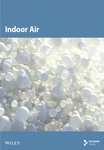Organic compounds as indicators of air pollution
Abstract
Abstract The most important indoor air pollutants have already been addressed with individual national guidelines or recommendations. However, an international set of guidelines or recommendations for indoor air quality (IAQ) is needed for these pollutants based on general and uniform rules for setting such standards. A major research need exist on the less adverse pollutants before recommendations or guidelines can be established. In the interim period a precaution principle should lead to an ALARA principle for these secondary causalities. It should be noted that volatile organic compound (VOC) as an IAQ problem still is in the end of a phase of ad hoc solutions, in the middle of a research phase and only in the beginning of a regulatory phase. Any final official regulation in this area will have to be tentative and the final regulation must await further research. Total volatile organic compound (TVOC) is an indicator for the presence of VOC indoors. The TVOC indicator can be used in relation to exposure characterization and source identification but for VOCs only, not as an indictor of other pollutants and their health effects. In risk assessment the TVOC indicator can only be used as a screening tool and only for sensory irritation.




